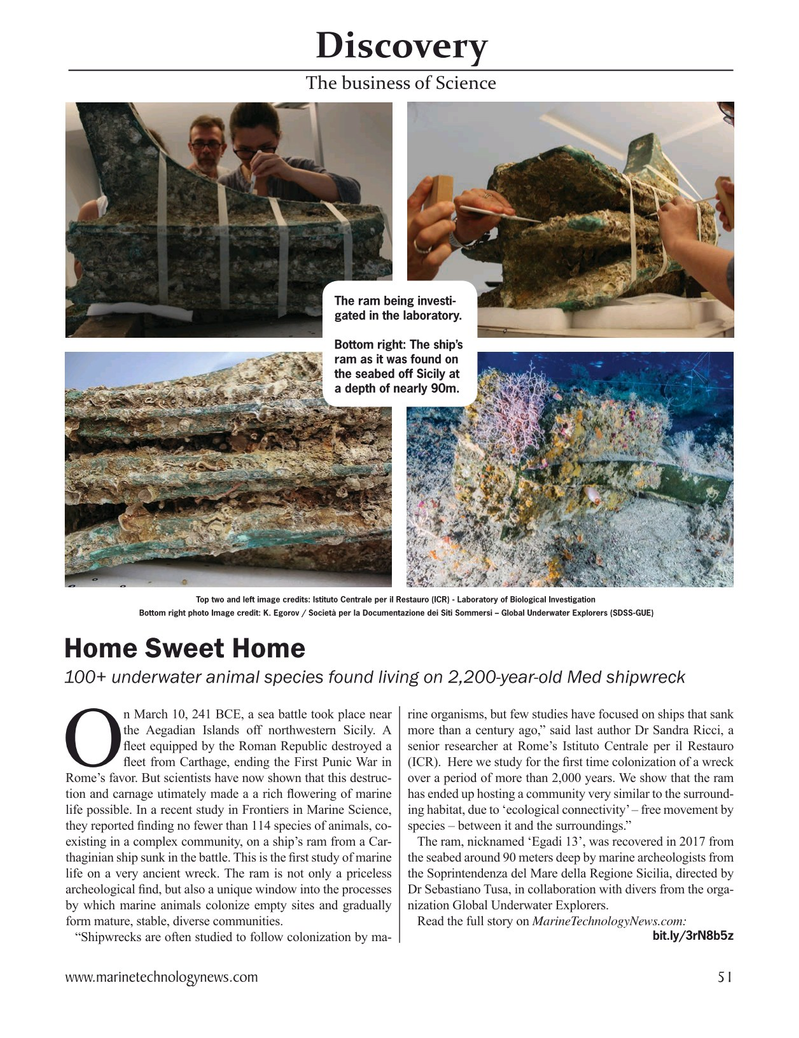
Page 51: of Marine Technology Magazine (January 2022)
Read this page in Pdf, Flash or Html5 edition of January 2022 Marine Technology Magazine
Discovery
The business of Science
The ram being investi- gated in the laboratory.
Bottom right: The ship’s ram as it was found on the seabed off Sicily at a depth of nearly 90m.
Top two and left image credits: Istituto Centrale per il Restauro (ICR) - Laboratory of Biological Investigation
Bottom right photo Image credit: K. Egorov / Società per la Documentazione dei Siti Sommersi – Global Underwater Explorers (SDSS-GUE)
Home Sweet Home 100+ underwater animal species found living on 2,200-year-old Med shipwreck n March 10, 241 BCE, a sea battle took place near rine organisms, but few studies have focused on ships that sank the Aegadian Islands off northwestern Sicily. A more than a century ago,” said last author Dr Sandra Ricci, a ? eet equipped by the Roman Republic destroyed a senior researcher at Rome’s Istituto Centrale per il Restauro
O? eet from Carthage, ending the First Punic War in (ICR). Here we study for the ? rst time colonization of a wreck
Rome’s favor. But scientists have now shown that this destruc- over a period of more than 2,000 years. We show that the ram tion and carnage utimately made a a rich ? owering of marine has ended up hosting a community very similar to the surround- life possible. In a recent study in Frontiers in Marine Science, ing habitat, due to ‘ecological connectivity’ – free movement by they reported ? nding no fewer than 114 species of animals, co- species – between it and the surroundings.” existing in a complex community, on a ship’s ram from a Car- The ram, nicknamed ‘Egadi 13’, was recovered in 2017 from thaginian ship sunk in the battle. This is the ? rst study of marine the seabed around 90 meters deep by marine archeologists from life on a very ancient wreck. The ram is not only a priceless the Soprintendenza del Mare della Regione Sicilia, directed by archeological ? nd, but also a unique window into the processes Dr Sebastiano Tusa, in collaboration with divers from the orga- by which marine animals colonize empty sites and gradually nization Global Underwater Explorers. form mature, stable, diverse communities. Read the full story on MarineTechnologyNews.com: bit.ly/3rN8b5z “Shipwrecks are often studied to follow colonization by ma- www.marinetechnologynews.com 51
MTR #1 (50-63).indd 51 1/25/2022 8:48:18 AM

 50
50

 52
52
